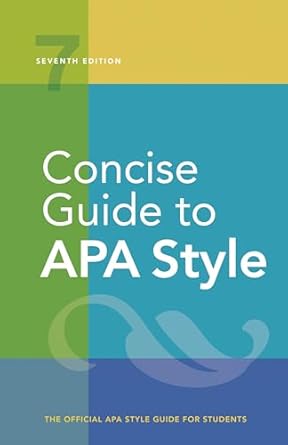[toc]
figure guidelines clarity ethics and best practices
Concise Guide to APA Style: 7th Edition (OFFICIAL)
Page 185 Review
Analyzing Figure Guidelines: A Deep Dive into Clarity and Ethics
This ebook excerpt provides valuable guidelines for creating effective and ethical figures in academic papers, particularly focusing on figures, photographs and their presentation.
Let’s dissect the key takeaways:
Understanding Figure Elements and Formatting
The initial part emphasizes the importance of clarity and precision in figure presentation. “Position any superscripts for specific notes near the element being identified.
It is preferable to report exact p values; however, if statistically significant values are marked with asterisks or daggers in the figure, explain them in a probability note (see Section 7.14).
For guidelines on formatting figure notes, see Section 7.14.” This highlights the need for specific and accessible notations, especially when dealing with statistical data.
Reporting exact p-values is encouraged for transparency, and if asterisks or daggers are used to indicate significance, a clear explanation in a probability note is crucial.
The Importance of Consistency and Comparison
The excerpt further stresses the significance of consistency in figure design. “Similar figures or figures of equal importance should be of equal size and scale.
Combine figures that are alike to facilitate comparisons between their content.
For example, two line graphs with identical axes might be combined horizontally into a single figure, or multiple figures might be combined into one figure with multiple panels (see Section 7.26).” This emphasizes the role of visual consistency in aiding comprehension.
Combining similar figures, such as line graphs with identical axes, into a single figure with multiple panels allows for direct comparison and reduces cognitive load on the reader.
Navigating the Nuances of Photographs
The ebook excerpt dedicates a significant portion to photographs, acknowledging their unique nature as a type of figure. “Photographs are a type of figure with special considerations.
Photographs in most student papers can be in color and saved in any widely available photo format (see Section 7.26 for more information on the use of color in figures).
Because reproduction softens contrast and detail in photographs, starting with rich contrast and sharp detail will improve the final version of the image.” This section acknowledges the importance of optimizing image quality, noting that reproduction processes can often diminish contrast and detail.
Therefore, starting with high-contrast and sharp images is vital for preserving clarity.
Furthermore, the use of cropping to enhance the image is addressed: “Photographs usually benefit from cropping to, for example, eliminate extraneous detail or center the image.” Cropping is acknowledged as a beneficial technique for removing distracting elements and focusing attention on the subject matter.
However, the excerpt then transitions to a critical point about ethical considerations:
Ethical Considerations: Authenticity and Consent
The excerpt emphasizes ethical considerations relating to photographic manipulations and obtaining consent. “However, when a photographic image has been altered in a manner beyond simple cropping and/or adjustment for light levels, clearly indicate in a general note how the image has been altered.
Ethical principles of publication forbid any intentional misrepresentation of images, just as fraudulent data manipulation is forbidden.” This underlines the ethical responsibility of researchers to be transparent about any alterations made to photographic images.
Any modifications beyond basic cropping or light adjustments must be clearly disclosed to maintain the integrity of the research.
The excerpt draws a parallel between image manipulation and fraudulent data manipulation, reinforcing the importance of ethical conduct.
Regarding identifiable individuals in photographs, the excerpt advises: “If you photograph an identifiable person, obtain a signed release from that person to use the photograph in your paper (see Section 8.38); if the person is not identifiable, a release is not needed.
If you took a photograph yourself, no citation or copyright attribution is required in the figure note.
If you want to reprint or adapt a photograph from another source, you may need to obtain permission to use it in your paper because professional photographs are usually the property of the photographer.
See Sections 8.35 to 8.39 for further information on reprinting or adapting photographs from other sources.” Obtaining informed consent from identifiable individuals is crucial to protect their privacy rights.
Additionally, copyright considerations are addressed, emphasizing the need to seek permission when using photographs from external sources.
Conclusion
In summary, this excerpt provides a comprehensive overview of best practices for creating and presenting figures, particularly photographs, in academic papers.
It underscores the importance of clarity, consistency, and ethical considerations.
By adhering to these guidelines, researchers can ensure that their figures effectively communicate their findings while maintaining the integrity of their work.
The emphasis on ethical considerations, particularly concerning image manipulation and consent, is a crucial reminder of the responsibilities that come with academic publishing.
Buy full ebook for only $18: https://www.lulu.com/shop/american-psychological-association/concise-guide-to-apa-style-7th-edition-official/ebook/product-rmzpq54.html?page=1&pageSize=4

